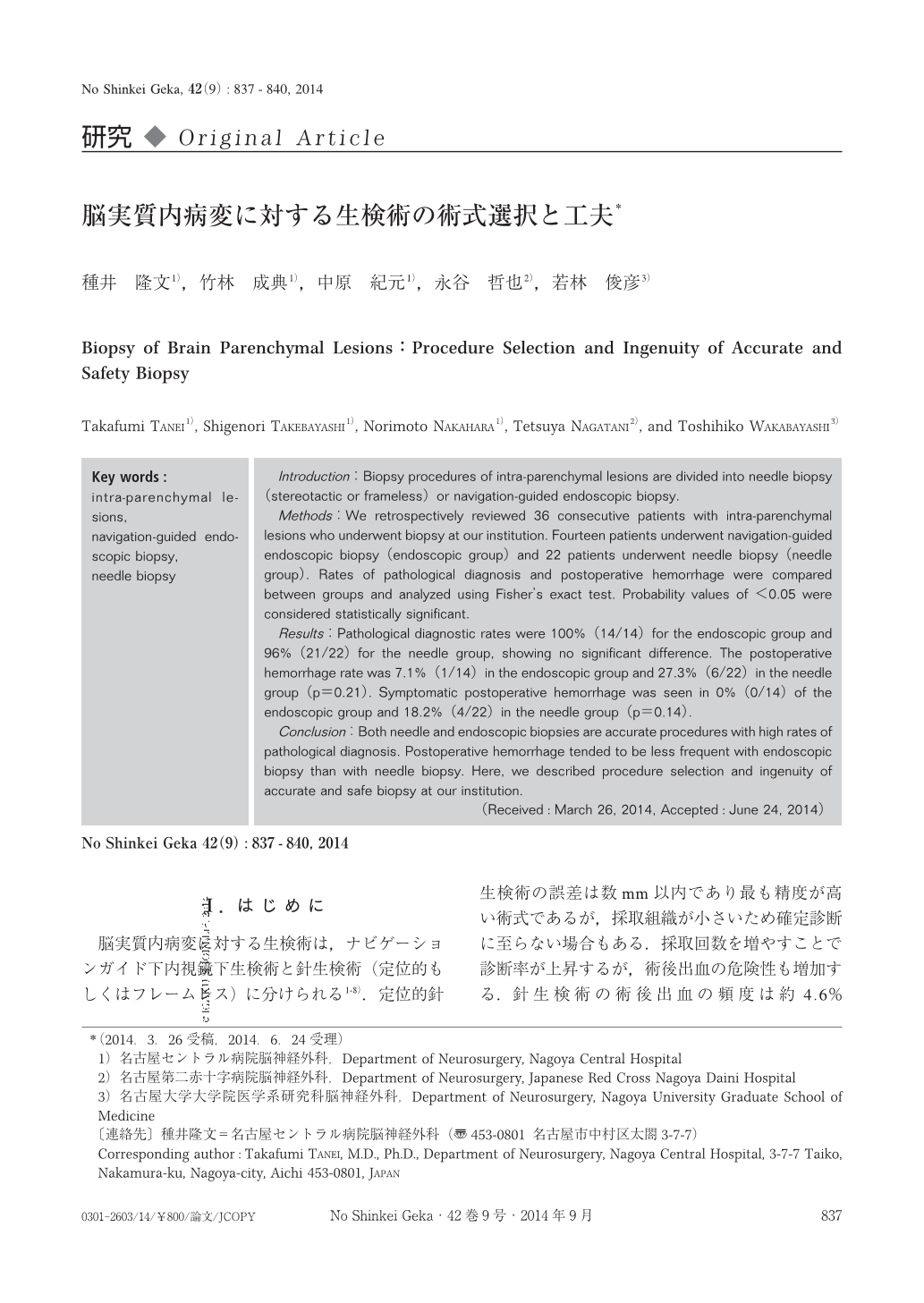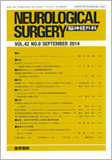Japanese
English
- 有料閲覧
- Abstract 文献概要
- 1ページ目 Look Inside
- 参考文献 Reference
Ⅰ.はじめに
脳実質内病変に対する生検術は,ナビゲーションガイド下内視鏡下生検術と針生検術(定位的もしくはフレームレス)に分けられる1-8).定位的針生検術の誤差は数mm以内であり最も精度が高い術式であるが,採取組織が小さいため確定診断に至らない場合もある.採取回数を増やすことで診断率が上昇するが,術後出血の危険性も増加する.針生検術の術後出血の頻度は約4.6%(0.08~9.2%)と報告され,重篤な神経症状の悪化を認めることが多い2,3,5,7).フレームレス針生検術は,専用フレームを装着せずにナビゲーションを用いて生検針を目標部まで挿入する術式である3).定位的針生検術よりも精度は低いが,診断率に違いはないと報告されている3).近年,内視鏡下での生検術の安全性,有効性が報告されており,採取組織が大きいこと,止血操作が可能なことなどが利点である1,4,6,8).各施設によって脳実質内病変に対する生検術の術式選択や方法が異なるが,名古屋セントラル病院(以下,当施設)におけるナビゲーションガイド下内視鏡下生検術と針生検術の診断率,術後出血率,術式選択および工夫などに関して報告する.
Introduction:Biopsy procedures of intra-parenchymal lesions are divided into needle biopsy(stereotactic or frameless)or navigation-guided endoscopic biopsy.
Methods:We retrospectively reviewed 36 consecutive patients with intra-parenchymal lesions who underwent biopsy at our institution. Fourteen patients underwent navigation-guided endoscopic biopsy(endoscopic group)and 22 patients underwent needle biopsy(needle group). Rates of pathological diagnosis and postoperative hemorrhage were compared between groups and analyzed using Fisher's exact test. Probability values of <0.05 were considered statistically significant.
Results:Pathological diagnostic rates were 100%(14/14)for the endoscopic group and 96%(21/22)for the needle group, showing no significant difference. The postoperative hemorrhage rate was 7.1%(1/14)in the endoscopic group and 27.3%(6/22)in the needle group(p=0.21). Symptomatic postoperative hemorrhage was seen in 0%(0/14)of the endoscopic group and 18.2%(4/22)in the needle group(p=0.14).
Conclusion:Both needle and endoscopic biopsies are accurate procedures with high rates of pathological diagnosis. Postoperative hemorrhage tended to be less frequent with endoscopic biopsy than with needle biopsy. Here, we described procedure selection and ingenuity of accurate and safe biopsy at our institution.

Copyright © 2014, Igaku-Shoin Ltd. All rights reserved.


